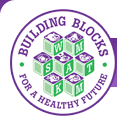
| Brought to you by the US Department of Health and Human Services, Substance Abuse & Mental health Services Administration |
 |
Home  About Us About Us  Links Links  Get E-mail Updates Get E-mail Updates  Awards Awards |
 |
|||
|
|
|||||
| Send this page to a friend | Print this page |  |
||||
|
|
 |
 
Be the Bridge—Raising a Child in More Than One LanguageWhat is so important about students learning a second language? Studies show that the rate of students learning English in schools is much greater than the rate of increase in all students attending school. In fact, since 1990, the number of students who are learning English in American public schools has increased more than 150 percent, while the overall student population has grown only 20 percent. This trend is likely to continue; in fact, these students may make up 40 percent of the school-age population by 2030. Parents of students who are learning English can help their child by participating in their child’s schooling. Parents can even help their child before he or she starts attending school. Because these children are learning two languages at the same time, parents need to act as a bridge between home and teachers to make sure that these children are ready for kindergarten. Who Are These Children Learning English in School? These young children who are learning English and their home language are described with different terms by different school systems. Some terms to describe these students include dual language learners, bilingual students, limited English proficient students, English-language learners, and linguistic minority students. Regardless of the term used, these children are learning a second language while mastering their first language. Challenges for Students Learning More Than One Language Benefits for Students Learning More than One Language
Parental Involvement Helps language Development Children who know more than one language can have personal, social, cognitive, and economic advantages throughout their lives. However, for a child to fully benefit from learning more than one language, parents must be actively engaged in their child’s school to make sure that the right process is in place. Parents need to support teachers in various ways for teachers to also support the home language so that early literacy can be fostered in the home as well as at school. Family Activity: Building Words Resources U.S. Department of Health and Human Services, National Institutes of Health “Bilinguals switch tasks faster than monolinguals”, takes note of children’s increased cognitive abilities when they learn a second language. “Bilingual Effects in the Brain” is a new study that describes how certain brain functions are enhanced in teens who are fluent in more than one language. The finding gives insight into how our senses help shape our brain. U. S. Department of Health and Human Services, Administration for Children and Families,Office of Head Start “Focus on Language Development: Reports” provides a list of selected resources and effective practices for families and educators to gain knowledge that is culturally and linguistically responsive to the needs of dual language learners’ children. "Two Languages Better Than One for Kids’ Brains: Study” is a new study showing that children who speak more than one language seem to have a learning advantage in problem-solving skills and creative thinking. Parent Power: Build the Bridge to Success provides tips for parents to support their children to be successful in school and in life. Dual Language Learning: What Does It Take? Head Start Dual Language Report is a study that assesses program needs, opportunities, and barriers as well as provides recommendations that effectively work with young dual language learners. Please note—to view documents in PDF format, you must have Adobe’s free Acrobat Reader software. If you do not already have this software installed on your computer, please download it from Adobe's Web site. |
||||||||||
| Site Map | Contact Us | FAQ | Ask SAMHSA | Privacy Policy | Web Site Policies | FOIA | USA.gov | Plain Language |
|
Updated on 9/13/2012 |